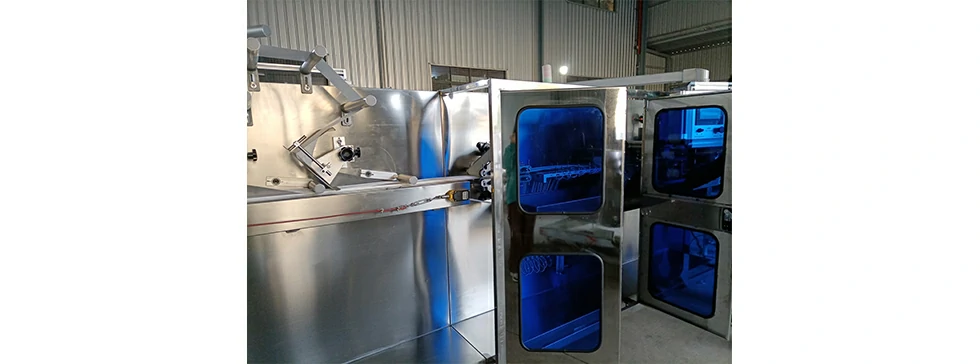Streamline Your Production with Cutting-Edge Wet wet tissue manufacturing
To streamline wet tissue manufacturing and embrace cutting-edge technologies, here are some key strategies and advancements you can consider:
Automated Material Handling:
Implement advanced automated material handling systems to streamline the movement of raw materials, such as non-woven fabric and solution ingredients. Automated systems can handle material feeding, cutting, and positioning, reducing manual labor, minimizing errors, and improving overall efficiency.
High-Speed Production Lines:
Upgrade your production lines with high-speed machinery capable of handling large volumes. Modern wet tissue manufacturing machines offer faster production cycles, higher throughput, and improved productivity. Consider investing in state-of-the-art equipment that can meet growing market demands.
Precision Liquid Dispensing:
Utilize precision liquid dispensing systems to ensure accurate and consistent application of solution ingredients onto the non-woven fabric. These systems can precisely control the amount of liquid applied, resulting in consistent product quality and minimizing wastage.
Smart Process Control:
Implement smart process control systems that monitor and adjust key parameters in real-time. These systems can automatically regulate temperature, humidity, solution concentration, and drying times, ensuring consistent product quality and reducing the need for manual adjustments.

Quality Assurance and Inspection:
Integrate advanced quality assurance and inspection systems into your production line. Incorporate machine vision systems and sensors to detect defects, irregularities, or contaminants during the manufacturing process. Real-time feedback mechanisms can help identify and rectify issues promptly, reducing waste and improving product integrity.
Robotics and Automation:
Embrace robotics and automation to optimize various tasks in wet tissue manufacturing. Robots can assist with material handling, product assembly, packaging, and palletizing, reducing manual labor and improving efficiency. Collaborative robots (cobots) can work alongside human operators, enhancing safety and productivity.
IoT Connectivity and Data Analytics:
Implement IoT connectivity and data analytics to monitor and optimize the manufacturing process. Connected sensors can collect data on machine performance, energy consumption, and production metrics. Analyzing this data can provide insights into operational efficiency, enabling you to identify areas for improvement and optimize resource allocation.
Sustainable Manufacturing Practices:
Incorporate sustainable manufacturing practices into your wet tissue production. Use eco-friendly and biodegradable materials for both the non-woven fabric and the solution ingredients. Implement energy-efficient technologies and optimize resource usage to reduce environmental impact.
Customization and Personalization:
Consider offering customization and personalization options to cater to diverse customer preferences. Invest in machinery that supports quick changeovers and flexible production capabilities, allowing you to produce different sizes, scents, or packaging designs efficiently.
Continuous Improvement and Innovation:
Foster a culture of continuous improvement and innovation within your organization. Encourage employees to identify process inefficiencies, propose ideas for improvement, and stay updated with emerging technologies and industry trends. Regularly evaluate and upgrade your manufacturing processes to stay competitive and meet changing market demands.
By adopting these strategies and embracing cutting-edge technologies, you can streamline your wet tissue manufacturing process, optimize efficiency, improve product quality, and meet the evolving needs of your customers.